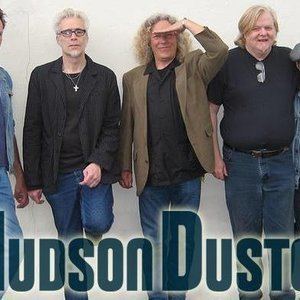Years active 1890s-1917 Name Hudson Dusters Membership 300 (est.) | Ethnicity Irish-American | |
 | ||
Founder Circular JackKid YorkeGoo Goo Knox Founding location Lower East Side, New York | ||
The hudson dusters ross irwin
The Hudson Dusters was a New York City street gang during the early twentieth century. Formed in the late 1890s by "Circular Jack", "Kid Yorke", and "Goo Goo Knox", the gang began operating from an apartment house on Hudson Street. Knox, a former member of the Gopher Gang, had fled after a failed attempt to gain leadership of the gang from then leader, Marty Brennan. However the two gangs later became allies during the gang wars against Gay Nineties gangs, the Potashes and Boodle Gangs, soon controlling most of Manhattan's West Side as far as 13th Street and eastern Broadway, bordering Paul Kelly's Five Points Gang to the north. While the gang dominated the West Side, it constantly battled smaller rival gangs including the Fashion Plates, the Pearl Buttons, and the Marginals for control of the Hudson River docks throughout the 1900s. Eventually, it drove the rival gangs out through sheer force of numbers, with over 200 members, not including the Gophers, who numbered several hundred more, controlling the waterfront by 1910.
Contents
- The hudson dusters ross irwin
- Swing on a star by dave van ronk the hudson dusters
- Members
- In popular culture
- References

The gang, now a dominant force in New York, included the likes of Charles "Red" Farrell, Mike Costello, "Rubber" Shaw, Rickey Harrison, and "Honey" Stewart. The gang became involved in election fraud as they were hired out by Tammany Hall politicians in exchange for political protection. A colorful member by the name of Ding Dong organized a push cart theft ring whereby he had a group of apprentice gang members toss packages to him from a passing wagon, distracting the police. Soon the gang began to be noticed by the press as reporters met members in Greenwich Village taverns hangouts becoming glamorized by the city. They came to represent the bohemian spirit of the area. According to author Luc Sante, activist Dorothy Day, by her own admission, spent much of her youth partying with the Dusters in Greenwich Village. Many of the gangs members, including most of its leaders, had become drug addicts and were known for their wild "cocaine parties" in which the gang wandered the city afterwards in a drugged state committing violent acts. One victim of these attacks was Gopher member Owney Madden who was shot six times outside the Arbor Dance Hall on November 6, 1914, resulting in the deaths of three of the gang members less than a week later. With the gang's political connections to Tammany Hall, the police remained inactive. However, the gang frequently moved its headquarters to avoid police raids by "strong arm squads".
The gang, who regularly demanded goods from local merchants, soon attracted the unwanted attention of the police after an incident in which the gang destroyed a saloon after its owner refused to deliver six barrels of beer to a gang party. The saloon keeper reported this to his friend Dennis Sullivan, a patrolman from the Charles Street station, who arrested Farrell and ten other members at a local pool hall for vagrancy. The gang retaliated, luring Sullivan into the neighborhood onto the premises of a local merchant, who had been forced to make a complaint against a member of the gang. When Sullivan arrived he was attacked by approximately twenty members and severely beaten, eventually losing consciousness. He was stripped of his uniform and his badge was thrown into a sewer drain. As the gang fled, five members remained behind to jump on Sullivan's back and to kick him in the face repeatedly before a police "flying squad" arrived. Hospitalized for over a month the incident was immortalized in a poem by Gopher leader "One Leg" Curran:
Says Dinny "Here's me only chanceTo gain meself a name;I'll clean up the Hudson Dusters,and reach the hall of fame."He lost his stick and cannon,and his shield they took away.It was then he remembered,Every dog had his day.The gang liked the poem so much they had it printed on thousands of sheets and distributed throughout the neighborhood as well as the Charles Street Station and the hospital where Sullivan was recovering. The song grew to be so popular that many juvenile gangs would often sing the tune on the street.
By 1914 however, with most of its leaders in jail or dead from drug overdoses, the remainder of the gang were driven from their territory by the Marginals under Tanner Smith, who after defeating the Pearl Buttons would assume control for the next decade. The last members of the gang were eventually arrested by police during its clearing of gangs from Manhattan in 1916.
